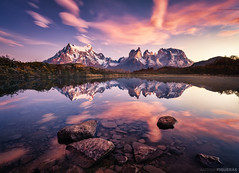Expos and Advancements: A Sampling
by Urso Chappell
In any article about the history of world’s fairs, you’ll see the many references to the inventions and other advancements that have been introduced at international expositions. It’s not always clear at the time, however, just how these advancements will change society… or if they’ll be forgotten completely.
Advancement can manifest itself in many ways. Technological advancement is perhaps the first that comes to mind for most people, but expos have also brought about other improvements to the lives of humans. We can also look at expositions that advanced artistic expression or were particularly effective in raising awareness.
Out of necessity, this can’t possibly be an exhaustive list, but it is intended to be a mere sampling of some of the advancements associated with past world’s fairs.
1851 London
From the very start, expositions pointed the way forward. London’s Crystal Palace, the very building the exposition was held in, was groundbreaking in more than one way. Cast plate glass was still new and the building used it in abundance: 84,000 square meters of it, in fact. It presaged the many, many iron and glass buildings we know today. Sadly, it caught on fire in 1936 and was destroyed.
Until I did some research for this article, I didn’t know this other first: The Exposition featured the first major installation of public toilets! Who knew?
1853 New York
New York had its own Crystal Palace two years later, albeit smaller. At that exposition, Elisha Otis demonstrated his safety elevator, the first elevator with a mechanism that locks the guides if the elevator descends too quickly. Otis’s name might still seem familiar, as his company, the Otis Elevator Company, is still the largest elevator company in the world.
1889 Paris
So obvious, I don’t need to go into too much detail, a structure known as the Eiffel Tower was created for the 1889 Exposition Universelle. Fortunately, it was not torn down afterwards as originally planned, so you just might have heard of it.
1893 Chicago
Four years later, Chicago was looking to out-do the Eiffel Tower. Their solution was to create a large wheel with 36 dangling cars (that could accommodate up to 60 people) that would rotate to give visitors views of the expo grounds from 80 meters (264 feet) above the ground: the world’s first Ferris Wheel.
Also making its debut at the World’s Columbian Exposition of 1893 was Whitcomb Judson’s “clasp locker,” what we now know as a zipper.
1900 Paris
Again, in Paris, at the 1900 Exposition Universelle, yet another creation would move people. Inventor Charles Seeberger had teamed up with the aforementioned Otis Elevator Company to create the first commercial escalator. At the time, you could ride it as something of an amusement ride. I think the thrill has worn off in the decades since.
Another new creation, known as a “talking film,” was also first publicized.
1904 St. Louis
As in my article about food, the 1904 Louisiana Purchase Exposition lays claims to many firsts, including the introduction of the X-ray machine, the electric typewriter, the electrical plug and outlet, tabletop stoves, dishwashers, electric dumbwaiters, and even a device called the “Poulson telegraphone,” the precursor to the telephone answering machine.
If I still had an answering machine, I’d be changing my outgoing message right now. I really need an excuse to add “telegraphone” to my vocabulary.
1939-1940 New York
The New York World’s Fair of 1939 and 1940 demonstrated modern highway systems as a solution to urban gridlock. We might bemoan the growth of low-density suburbs and long highway commutes today, but at the time, they were seen as cures for polluted, crowded inner cities. General Motors’ Futurama exhibit most notably promoted the concept of an Interstate Highway System, which the United States would start building in the 1950’s.
Film and Video:
1967 Montreal, 1970 Osaka, 1974 Spokane,
1986 Vancouver, 1988 Brisbane, 2005 Aichi
Not surprisingly, those “talking films” of 1900 became very popular at world’s fairs, and advancements in film and video often came hand-in-hand with world’s fairs.
Expo ’67 became known for many of its pavilion’s elaborate video presentations, some projected on multiple screens simultaneously or projected onto 3-dimensional objects. It was a great time for artistic experimentation.
The first IMAX film, Tiger Child, was shown at Osaka’s Expo ’70. The United States Pavilion at Expo ’74 in Spokane debuted the first very large IMAX screen and Vancouver’s Expo ’86 hosted the first permanent 3-D IMAX theatre.
Brisbane, Australia’s Expo ’88 introduced an early analog version of High Definition (HD) television for the first time in its Japan Pavilion. This technology would evolve into the high-definition television we currently know.
Aichi, Japan’s Expo 2005 brought us a glimpse into what’s called Ultra High Definition Television, which has 16 times as many pixels as HD Television. The BBC plans to experiment with the technology during the 2012 Summer Olympics in London.
Thinking Environmentally: 1974 Spokane and Beyond
Thinking environmentally might seem obvious now, but it wasn’t always that way. As I mentioned in an earlier article, the relatively small city of Spokane, in the U.S. state of Washington, brought a new awareness to the public at it’s Expo ’74 that continues to this day.
1982 Knoxville
Sometimes, big advancements are barely noticed at the time, but turn out to have a profound effect many years later. When the United States Pavilion at the 1982 World’s Fair in Knoxville installed touch screen monitors to enhance its presentation on energy, it was seen as perhaps a cute way of allowing people to push buttons directly on a screen. Touch screens had been around for a few years already in 1982, but this was the first time displays were created for public use.
I remember, as a 15 year old, I thought this technology was pretty cool. I wouldn’t have imagined this technology would result in my 44-year-old self constantly having to wipe smudge marks off both my tiny mobile phone and my tablet computer.
1985 Tsukuba
Can’t improve much on that escalator from 1900? You’d be wrong. Mitsubishi created a “spiral” escalator for a department store in conjunction with Expo ’85 in Tsukuba, Japan.
2010 Shanghai
Often, it’s easy to discount predictions of future technology. After all, we still don’t have the jet packs and flying cars we were promised decades ago.
Just two years ago, in Shanghai, I witnessed both the Cisco and GM-SAIC Pavilions predict a future with self-driving cars. At the time, I was ready to put these ideas into the “impossible pipe dream” category. Weeks, later, Google announced that they were already doing this on a limited scale. Suddenly, I’m not quite so skeptical.
2012 Yeosu
So, what will you see at Expo 2012 in Yeosu? Well, you’ll see modern structures that are the descendants of the Crystal Palace and Eiffel Tower. I think it’s safe to say there will be elevators and escalators, as well. Oh, and public toilets.
You’ll also see many films, some perhaps experimenting in new ways. Fortunately, the technology and art of filmed entertainment continues to evolve, amaze, entertain, educate, and inspire.
But, there might be something there on that 25-hectare site that won’t seem like a big deal now, or might seem like a modest innovation, but could have big implications for the future. Seventy-one percent of our planet is covered by the oceans, so much of our future may lie in that vast expanse and Yeosu could point the way.








Thanks Urso again for a very illuminating article.
And thanks for mentioning the debut of HDTV at the Japan Pavilion for Brisbane’s World Expo 88, where I worked at my first Expo.
Looking forward to the next instalment!